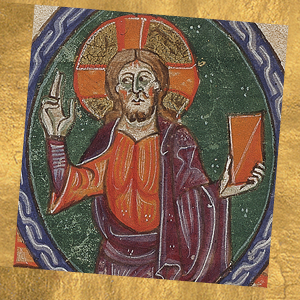Saint Martha, Disciple of the Lord

Saint Martha is commemorated each year on 29 July. From her diligence, we learn not to allow ourselves to be so overcome by daily duties that we neglect love; from her profession of faith we learn that life in God makes us experience wonders that we could not believe possible.
We learn about Saint Martha from the Gospels. She was from Bethany, a village a few kilometers from Jerusalem. The sister of Lazarus and Mary, she was considered diligent and meticulous; she was certainly one of the first to believe in Jesus. The Lord was often a guest in her home, especially during the time of His preaching in Jerusalem.
Saint Luke especially is able to “draw us a picture” of St Martha, describing her daily life. In his Gospel, relating one time when Jesus was visiting His friends in Bethany, the Evangelist writes: “As they continued their journey He entered a village where a woman whose name was Martha welcomed Him. She had a sister named Mary [who] sat beside the Lord at his feet listening to Him speak. Martha, burdened with much serving, came to Him and said, ‘Lord, do you not care that my sister has left me by myself to do the serving? Tell her to help me.’ The Lord said to her in reply, ‘Martha, Martha, you are anxious and worried about many things. There is need of only one thing. Mary has chosen the better part and it will not be taken from her.’”
The Master helps her to understand that even praiseworthy labour can risk obscuring the interior life. It is a warning that causes one to reflect on how important it is to nourish the spirit, to listen to the Word of God, because it is the Word of God that gives meaning to our daily activities. Nonetheless, on account of her admirable dedication to doing the work necessary to offer a guest a comfortable respite, the Church recognizes Martha as a model of industriousness.
And so Martha and Mary are serve respectively as examples of the active and the contemplative life; the life of external activity and the life of prayer. In the life of a Christian, neither should be lacking; activity and contemplation should be seen as complementary, and not opposed to one another.
Martha’s profession of faith
Saint Martha has also left us a strong witness of faith. We see, in her response to Jesus’ questions after the death of her brother Lazarus, a total belief, a faith that does not hesitate, does not doubt. Martha has complete confidence in God, even in the face of what seems impossible on a human level: “When Martha heard that Jesus was coming, she went to meet Him; but Mary sat at home. Martha said to Jesus, ‘Lord, if you had been here, my brother would not have died. [But] even now I know that whatever you ask of God, God will give you.’” It is already an extraordinary profession of faith; but the colloquy between Martha and Jesus continues. And from this simple woman of Bethany, we come to understand what it means to believe in Jesus Christ: “Jesus said to her, ‘Your brother will rise.’ Martha said to Him, ‘I know he will rise, in the resurrection on the last day.’ Jesus told her, ‘I am the resurrection and the life; whoever believes in me, even if he dies, will live, and everyone who lives and believes in me will never die. Do you believe this?’ She said to him, ‘Yes, Lord. I have come to believe that you are the Messiah, the Son of God, the one who is coming into the world.’” It is the essence of Christianity; Martha, in her answer, condenses the whole of the faith into a simple confession of belief, which in turn is the faith of every believer; a simple answer in which every Christian can recognize the meaning of life.
The origins of her liturgical memorial
Tradition tells us that, after the first persecutions of Christians, Saint Martha, with Mary, and Lazarus, and other disciples, left their own land and went to France, arriving in Saintes-Maries-de-la-Mer, in Provence, where they brought the Christian faith. The liturgical memorial of Saint Martha was begun by Franciscans, in 1262, who celebrated her feast on 29 July, eight days after the feast of her sister, St Mary Magdalene. In Bethany (now known as El-Azariyeh, “the place of Lazarus”), one can find the tomb of Lazarus, as well as a sanctuary built upon the remains of Byzantine and Crusader structures -- themselves constructed on top of a pre-existing structure. This is believed to be the house of Martha. The church, with its sanctuary in the form of a Greek-cross, is embellished with beautiful mosaics, that portray the episodes related in the Gospel that refer to Martha, Mary, and Lazarus.
More upcoming events:







 Your contribution for a great mission
Your contribution for a great mission

